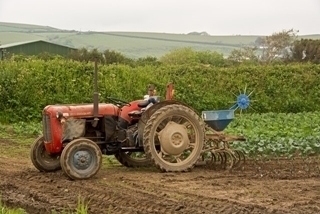Key ways to help a key industry.
.
One business which is not being headlined as up for government support but which is the most important of all is farming:
.
Five ways to support our farmers in the time of COVID-19 coronavirus
How is the current crisis affecting British farmers and growers, particularly the smaller farm business sector? Are they getting the support they need to feed the population? A quick look at the top issues and five ways you can support our farmers and growers.
This paper is by Vicki Hird on the Sustain website:
 Farmers, growers and the wider farm community have had to deal with sudden and very major disruption in the past weeks including; loss of their usual markets and income as pubs, caterers and major restaurant chains close; lack of workers from having to self-isolate; and losing European and other workers to pick and pack crops. They are also facing cashflow disruption; transport challenges; and regulatory issues arising from new supply chain expectations. Many are also helping the most vulnerable in their communities to access food – which is especially challenging in rural areas.
Farmers, growers and the wider farm community have had to deal with sudden and very major disruption in the past weeks including; loss of their usual markets and income as pubs, caterers and major restaurant chains close; lack of workers from having to self-isolate; and losing European and other workers to pick and pack crops. They are also facing cashflow disruption; transport challenges; and regulatory issues arising from new supply chain expectations. Many are also helping the most vulnerable in their communities to access food – which is especially challenging in rural areas.
I know many of our members who work directly with farmers and growers are doing all they can to tackle these issues. The Landworkers’ Alliance are seeking emergency measures and working hard to match potential workers with farmers who need them. The Soil Association, Organic Farmers & Growers and other certification bodies are taking inspections online where needed to avoid risk of spreading the virus and are providing support and advice for producers. The National Farmers Union’s Food Chain team is linking up foodservice businesses with retail supply chains to help provide additional volumes into shops, to make up for the drop in demand from food service.
Supporting our farmers and growers in this difficult period will be vital. Here are some key ways to help:
- Support local farmers and farm initiatives by buying from them on-line. But bear with them as they are dealing with major changes and a huge level of demand that they may not be geared up for. Useful signposting organisations include Big Barn, Farmers Weekly map, Farm Retail Association farm shops, buying organic, box schemes, Open Food Network, Better Food Traders, FarmDrop – and there are many more if you search around locally and in your local media.
- Be patient if there are glitches. No one has done this kind of transformation before on such a scale.
- Waste no food. This was a vital action before the crisis as wasted food means wasted, land, water, and greenhouse gas emissions. We’re understanding the vital importance of this in real time! Shop for essentials only.
- Consider working on a farm if you can and have free time now. (good sites I have found so far – England, Scotland, Wales), The good news is that people are already flocking to work on farms but our farmers and growers will need more. The pandemic may prevent many of the 70,000 seasonal agricultural workers we need from travelling.
- Join and support campaigns (such as by the Landworkers Alliance, Federation of Small Businesses, and to ensure small businesses (which most farms are) have the financial support and assistance they need to keep going, especially the smaller ones that do not get subsidies. Be a good food citizen now and for always – find out what this means here.
- Check out a few other useful links – if you eat fish please support your local fishmonger – more details of what you can do to help fisherfolk in this blog from my colleague Ruth Westcott. Do support your local Real Bread bakers – bakers are often small businesses who will be struggling as people stop shopping on the high streets.
The UK Government has published guidance for businesses, employers and employees and a package of crisis support measures. But the more support that our farmers and growers get from citizens and buyers the better, and ideally people will keep that support going after the crisis has passed.
Five ways to support our farmers in the time of COVID-19 | sustain.org